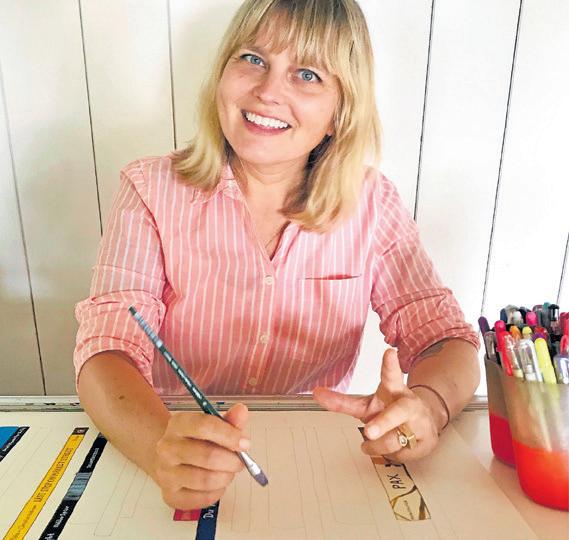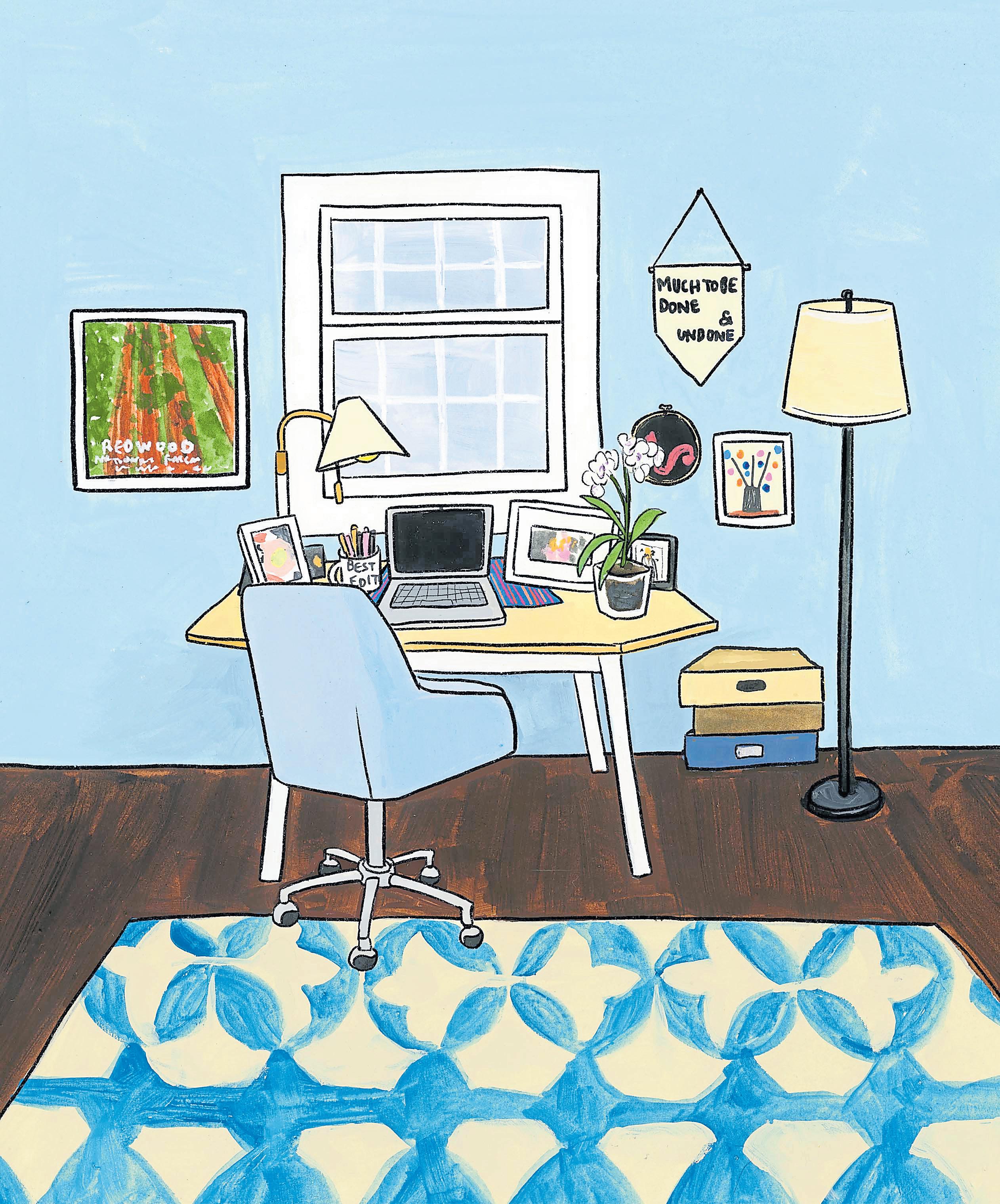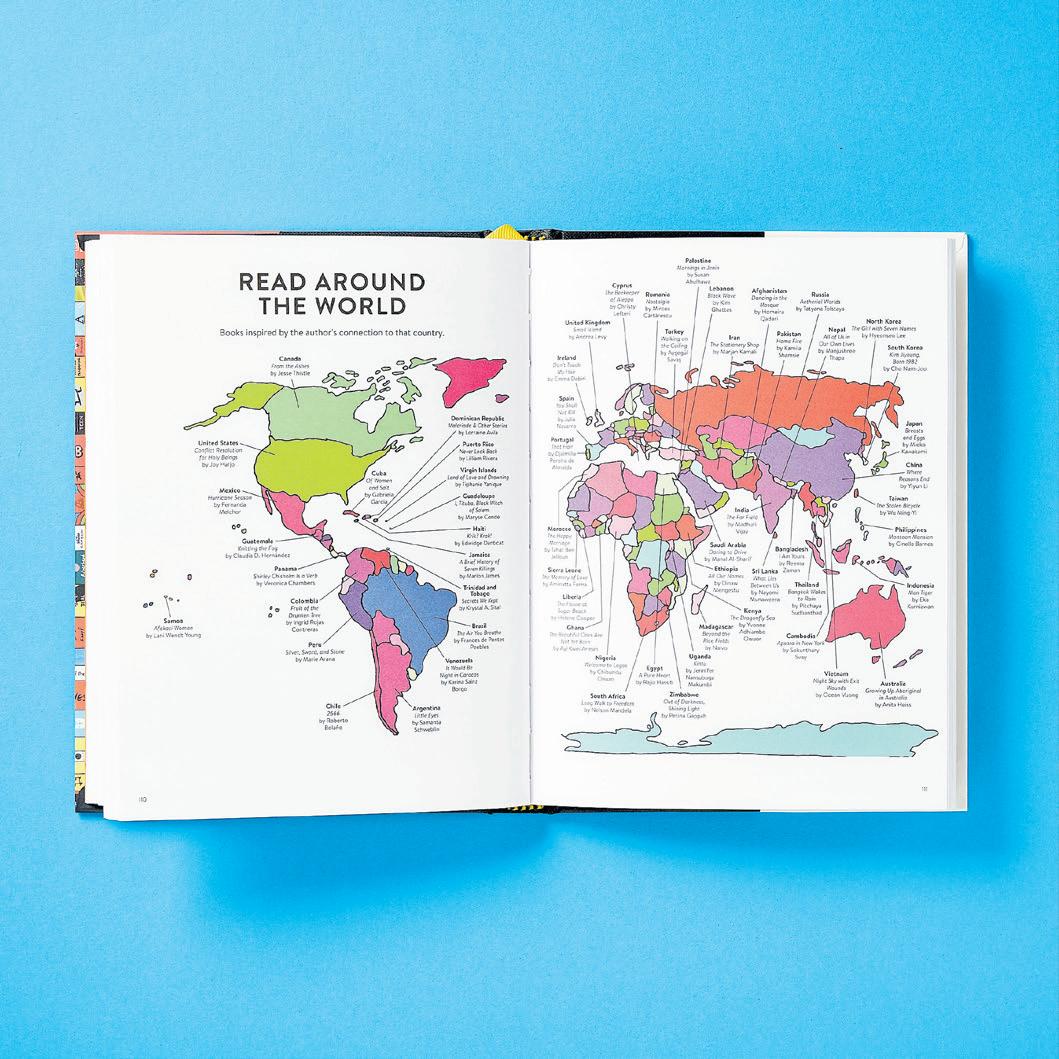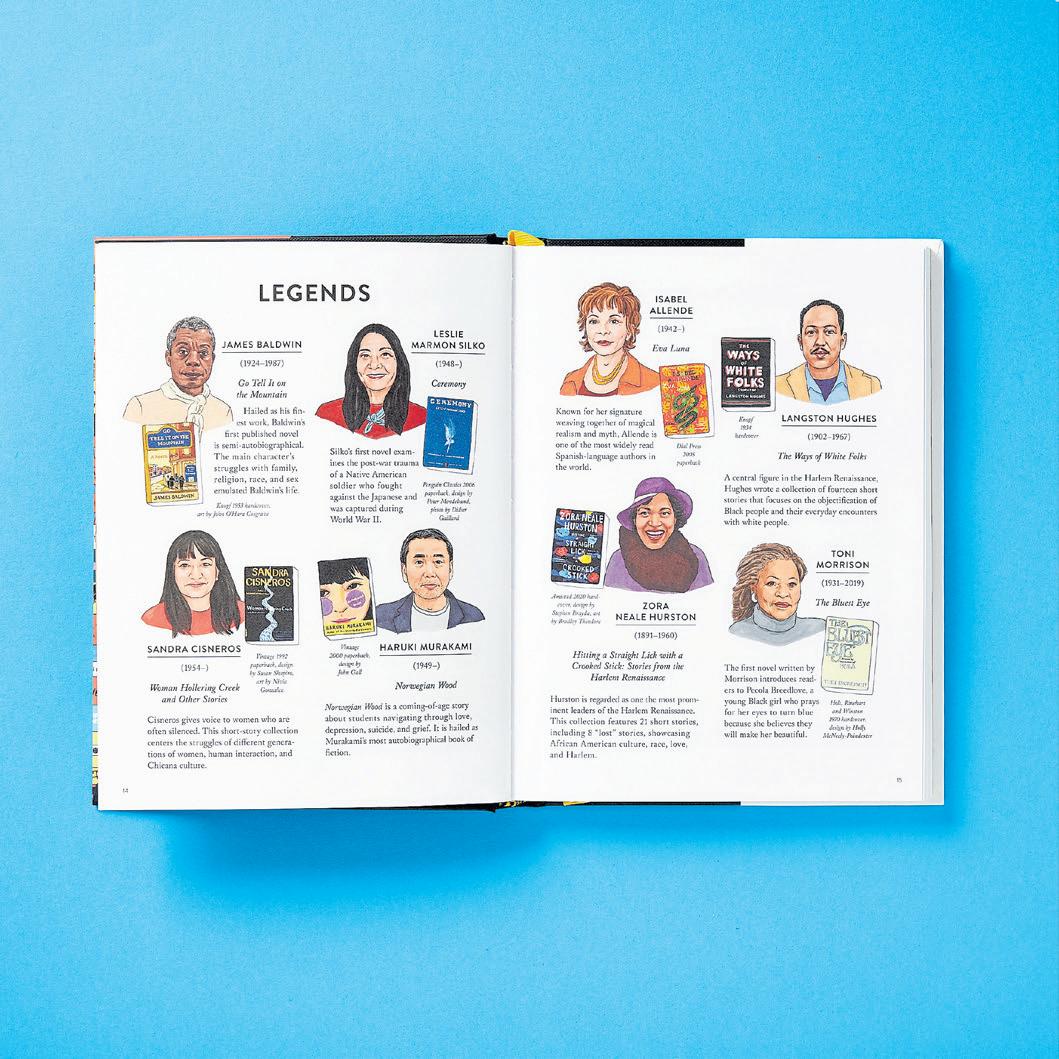
5 minute read
Two book lovers, working miles apart, collaborate on a ‘Bibliophile’ guide that will diversify your reading list
STORY BY JOAN MORRIS ILLUSTRATIONS BY JANE MOUNT
That artist Jane Mount and Bookstagrammer Jamise Harper, who live in different parts of the country and move in entirely different circles, would ever meet, let alone collaborate on a book, is a plot twist of the headiest sort. The pair, co-authors of “Bibliophile: Diverse Spines” (Chronicle Books), have yet to meet in person, even though they’ve spent the past year researching and writing the ultimate pick-me-up-andthumb-through book on authors, titles, bookstores and all things bookish involving marginalized authors and bookstore owners.
“We’ve done everything through Zoom and Google Chat, emails and phone calls,” Mount says, “but you’d never know it. It could not have gone better.”
“Diverse Spines” is a sequel to Mount’s first book, “Bibliophile: An Illustrated Miscellany,” an irresistibly colorful 2018 collection of authors, trivia and details. Both books are illustrated with Mount’s distinctive artwork depicting book covers and book stacks showing off their spines.
The original was the offshoot of Mount’s artwork and her love of books. At the time, she and her husband were living in a tiny Manhattan apartment, where her art “studio” doubled as kitchen table and office. Instead of painting the large figurative canvases she was then known for, Mount had to scale back on her chosen medium.
“One day, I was sitting at the table with a blank piece of paper in front of me,” Mount recalls, “and I had to draw something to make this paper not blank.”
She started sketching her bookshelf, drawing in the books and their titles. Her husband’s friend stopped
Bookstagrammer Jamise Harper, top, co-authored “Bibliophile: Diverse Spines” with artist Jane Mount, above, through a long distance relationship that included researching and writing the ultimate pick-me-up-and-thumb-through book.


@HARPNOIR;
DARKO KARAS
by, saw the four or so drawings she had made and was intrigued. He offered to buy them on the spot.
“I thought, ‘Hey, maybe there’s something to this,’” Mount says.
She started drawing friends’ bookshelves, then decided to get more anthropologic — her major in college — by asking her friends to select their favorite books for the project, an exercise that provided insight into their lives and personalities. When she began posting the results on Instagram, the project took off. Custom paintings, prints and mugs soon followed — which is how she and Harper eventually connected.

“Curious George” was Harper’s first love. She remembers the feel of the book, the weight of it in her hands and, most importantly, the story. That sense of awe over storytelling never wavered. By adulthood, she was doing book and wine reviews for family and friends on Instagram and arranging her bookshelves in a similar vein. Some of her most recent favorite reads — “The Love Songs of W.E.B Du Bois,” “Unbound” by Tarana Burk, “How the Word Is Passed” by Clint Smith and “My Monticello” by Jocelyn Nicole Johnson — sit on a shelf just above some of her favorite wines. Among them: Black Girl Magic Rosé from McBride Sisters, a Chaos Theory red blend from Brown Estate and a rosé from Michael Lavelle Winery.
When her sister suggested she share her observations with the world, Harper created the hashtag #spinesvines and became a Bookstagrammer, a book-inspired Instagrammer.
Harper and Mount’s worlds intersected when Harper’s son ordered a Christmas present, a mug from Mount with some of his mother’s favorite book titles. Harper gushed about it on Instagram. Mount saw the post and checked out Harper’s book recommendations. And each started following the other.
Things might have rested there, but last year, Mount began talking with her publisher about a new “Bibliophile” title. As they bandied ideas about, one theme caught their attention.
“I said I’d love to do one on how to read more diversely,” Mount says, “but I wanted to work with someone. I immediately thought of Jamise. She was already working on that, getting people to read books by women from all different backgrounds. I thought she would be perfect.”

Mount sent her a DM: “Hey, ever thought of co-authoring a book?”
Convinced Mount had accidentally DMed the wrong Bookstagrammer, Harper replied, “Are you sure you have the right person?”
Mount was very sure.
With COVID surging, there would be no in-person meetings. Mount was living in Hawaii, isolating in a bungalow. Harper was in Washington, D.C. So they burned up the phone lines and Wi-Fi as they laid out chapters and divvied up the work, choosing topics and authors. Harper, who loves historical fiction and poetry, volunteered to write those; Mount took cooking and illustrators, and they split the others.
Both women say it was important to them to celebrate great writing that transcends race, ethnicity and sexuality, highlighting the differences but more importantly, the similarities we share.
“For a long time, the stories have been there,” Harper says, “but they’ve been overlooked, not marketed or promoted. The writers have always been telling these stories. (Now) we want people to get out of their comfort zone and diversify their bookshelves. When they do, they open the space for compassion. People focus so much on our differences, but I guarantee you’ll find something you can relate to.”
The book has shown even Mount, who thought she was already reading a diverse array of authors, that there was so much more out there.

“A book is a little empathy machine,” Mount says. “It’s amazing how you can step into someone else’s life, and it might be very different from yours, but it expands your mindset. Reading diversity makes you realize how different we can be, but how the same we can be at the core. It makes you feel a sense of belonging. That’s what we’re looking for.”


Jane Mount’s 5 favorite books

“Men We Reaped” by Jesmyn Ward: This memoir is an agonizing, powerful look at conditions in the deep South, where men, like crops, are mowed down by the circumstances of life in poverty. Ward writes about the five young men she knew, including her brother, who died from drugs, accidents, suicide and bad luck, and asks why.
“Homegoing” by Yaa Gyasi: The legacy of slavery, woven through the decades and generations, is told through the lives of two half-sisters, one sold into slavery and sent to the United States, the other who married a British slaver. The story travels through 300 years of slavery and its consequences in this country and warfare and British colonization in Ghana.
“The Street” by Ann Petry: A young Black woman in Harlem in World War II is trying to raise her son alone while dealing with poverty, racism, lack of opportunity and predatory men. Called a classic by book reviewers, (it reveals) sentiments and realities of its time that resonate today.
“The Fire Next Time” by James Baldwin: Written in 1963 by the novelist, playwright, essayist, poet and activist, “The Fire Next Time” contains two essays: “My Dungeon Shook: Letter to my Nephew on the One Hundredth Anniversary of the Emancipation” and “Down at the Cross: Letter from a Region of My Mind.” The title is this lyric taken from the Black spiritual, “Mary Don’t You Weep”: “God gave Noah the rainbow sign/No more water, the fire next time.”
“Bone” by Yrsa Daley-Ward: A visceral collection of poems that cut straight to bone on mental health, religion, sexuality, death, love, depression and life as a Black woman.










